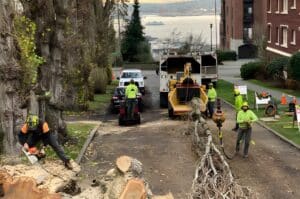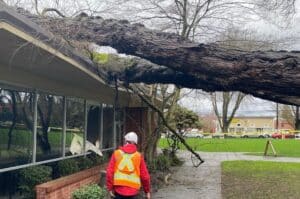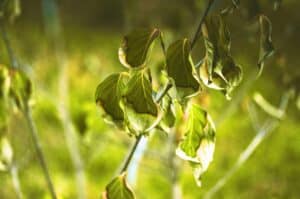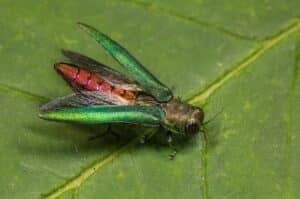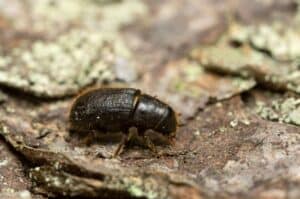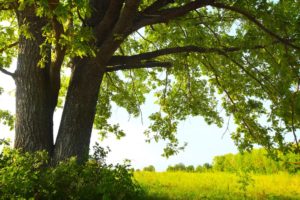A Pest that Prefers the Cold – Battling Winter Moths
Winter Moths invade Seattle! Uncover the hidden dangers and learn how to protect your trees from these cold-hardy pests. Read on to learn more!
Winter moths (Operophtera brumata) have become a concerning issue in Seattle. Infesting mainly oak, maple, and fruit trees, this invasive moth species can potentially damage many different trees in the area. Accidentally introduced to the Eastern United States from Europe, winter moths have since spread throughout North America, defoliating forests and shade trees.
In this article, we will explore the impact of winter moths on Seattle and Puget Sound area trees and discuss effective ways to combat them.
Winter Moths – Key Takeaways
- The winter moth (Operophtera brumata) is an abundant species in Europe and the Near East, known for its unique behavior of being active in late autumn and early winter.
- The females of the winter moth are virtually wingless and cannot fly, while the males are fully winged and fly strongly. After fertilization, the females lay around 100 eggs each.
- The winter moth is considered an invasive species in North America, originating in the Eastern US and moving west to infest areas including Nova Scotia, Oregon, Washington, and British Columbia. In the Eastern US, it has caused severe defoliation in states like Massachusetts, Rhode Island, New Hampshire, and Maine.
- Efforts at biological control, such as the introduction of parasitic wasps and flies, have been made to reduce the winter moth infestation. These methods have shown some success in controlling the population.
What is the Winter Moth?
The winter moth (Operophtera brumata) is a species of moth that is abundant in Europe and the Near East.
It is known for its unique lifecycle, adult winter moths are active in late autumn and early winter and, unlike most insects, use endothermy (internal maintenance of body temperature) to remain active in cold temperatures.
The winter moth lifecycle begins in early spring when the larvae emerge from egg masses laid near leaf buds. This usually occurs after a series of days with daytime high temperatures reaching around 50°F (10°C). The recently hatched larvae feed on expanding leaf buds, often burrowing inside them. They continue to feed on foliage for approximately six weeks.
As they grow, the larvae can produce silk strands to be wind-blown to other trees. By mid-May, the larvae descend to the ground and pupation occurs in the soil. The adults then emerge from the soil in mid-late November.
The female moths, which are flightless, release pheromones (chemical signals) to attract males. After mating, the females lay their tiny eggs in bark crevices, on branches, in lichen, and under bark scales.
The University of Washington has some great tips for dealing with winter moths. Check them out here!
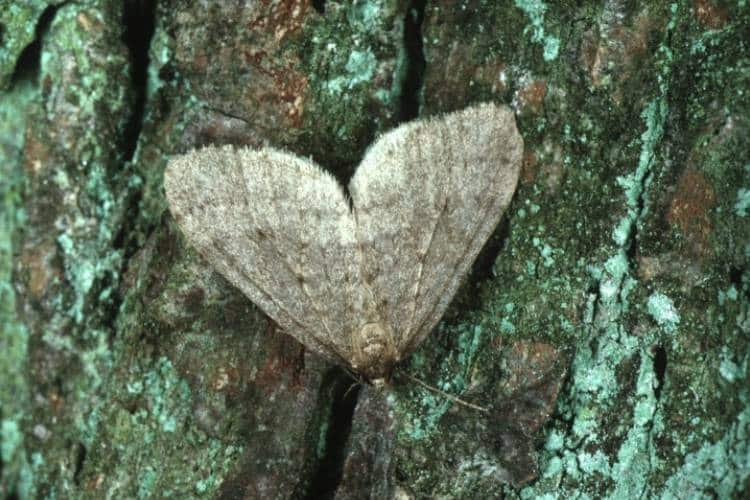
Louis-Michel Nageleisen, Département de la Santé des Forêts, Bugwood.org
What Seattle Area Trees Do Winter Moths Affect
The extent of tree damage caused by winter moths in the Seattle area is significant. These invasive pests feed on a wide range of deciduous trees, including oak, apple, maple, birch, and more.
Their defoliation can lead to weakened trees, reduced growth, and even tree death. This affects the overall health and aesthetics of the local tree population. They are known to feed on a wide range of deciduous leaves, including oak, apple, maple, birch, and many others.
Winter Moth caterpillars can defoliate trees, which can weaken them and make them more susceptible to other stressors and diseases. In other areas where winter moths have invaded, such as the northeast of the United States, they have caused significant defoliation of forests and shade trees.
It is likely that the tree damage caused by winter moths in Seattle could have similar consequences. However, more research is needed to fully understand the extent of the damage and its impact on the local tree population.
Efforts are underway to study and control the winter moth population in order to mitigate the potential damage to trees in Seattle.
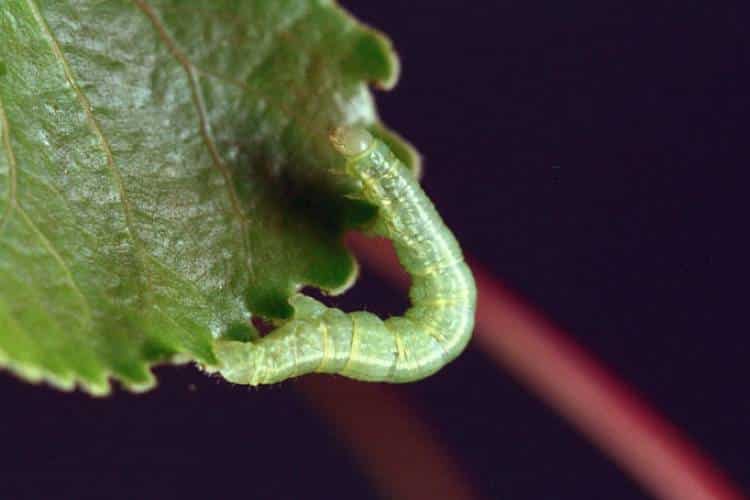
The winter moth caterpillar can cause significant feeding damage to Seattle area trees. Photo used courtesy of E. Bradford Walker, Vermont Department of Forests, Parks and Recreation, Bugwood.org.
The Winter Moth – Frequently Asked Questions
How did winter moths become an invasive species in North America?
Winter moths became an invasive species in North America through accidental introduction. The first confirmed infestations were observed in Nova Scotia, Canada, in the 1930s. They were later introduced to Oregon in the 1950s and the Vancouver area of British Columbia around 1970.
The moths spread to the eastern states of the United States in the late 1990s and have since become well-established in Massachusetts, Rhode Island, New Hampshire, and Maine. Efforts at biological control are currently underway to manage their population.
What is the reproductive behavior of winter moths?
The reproductive behavior of winter moths involves the females emitting pheromones in the evening to attract males after emerging from their pupae.
After fertilization, the females lay around 100 eggs each, with larger females generally laying more eggs.
The eggs are laid in bark crevices, on branches, in lichen, and under bark scales.
This behavior allows for the successful reproduction and population growth of winter moths.
How do winter moth larvae disperse to different trees?
Winter moth larvae disperse to different trees through a process called ballooning. After hatching from their eggs, the young larvae produce silk strands that catch the wind and carry them to nearby trees. They can travel long distances in this manner, allowing them to colonize new areas and find fresh food sources.
Ballooning is an important mechanism for the dispersal of winter moth larvae and contributes to their ability to survive and thrive in different environments.
How do winter moths adapt to changing spring temperatures?
Winter moths adapt to changing spring temperatures by delaying their response to the temperature trigger for hatching. As climate warming causes spring temperatures to become warmer sooner, some winter moth eggs hatch before tree leaf buds have opened, resulting in starvation for early hatchlings.
To survive, the moths have evolved to resynchronize with bud opening by delaying their response by 5 to 10 days. This genetic adaptation allows the moths to hatch when there is ample food available, increasing their chances of survival.
Are there any natural predators or biological control methods for winter moths?
There are natural predators and biological control methods that can be used to manage the population of winter moths.
In Europe, two parasitic species, a wasp and a fly, prey on winter moth caterpillars. These species have been introduced in certain areas in North America, such as Nova Scotia and Massachusetts, to help reduce winter moth infestations.
The introduction of the fly, Cyzenis albicans, has shown positive results in reducing winter moth densities and leaf defoliation.
Additionally, there are chemical methods, such as the use of Bt and spinosad, that can be effective in controlling winter moth caterpillars.
Need Help with Winter Moths or Another Pest?
Call Seattle Tree Care today at 206-789-0534 for a pest and disease inspection. We’re Seattle and Puget Sound’s tree service experts, so you can trust us to handle all of your tree care needs!
SEE MORE ARTICLES FROM OUR b(LOG)
We've got you covered with tips, resources, updates, how-to's, and other helpful information about trees and landscapes in Seattle, Puget Sound, and King County, WA. Join the thousands of smart local residents who get the monthly newsletter from Seattle Tree Care for helpful information you won't want to miss!
There's no spam - we promise! We are committed to keeping your e-mail address confidential. We do not sell, rent, or lease our contact data or lists to third parties.

